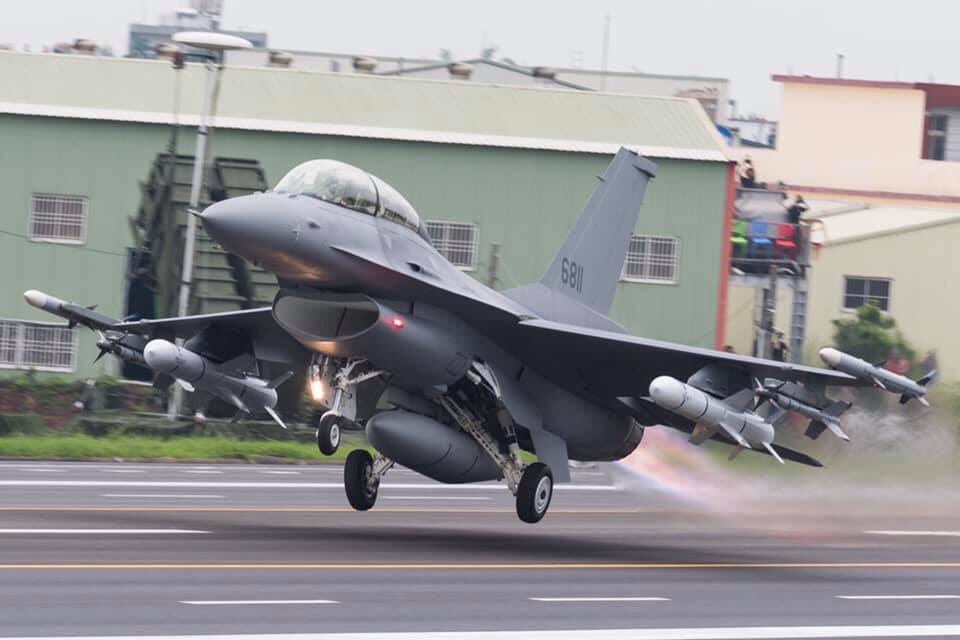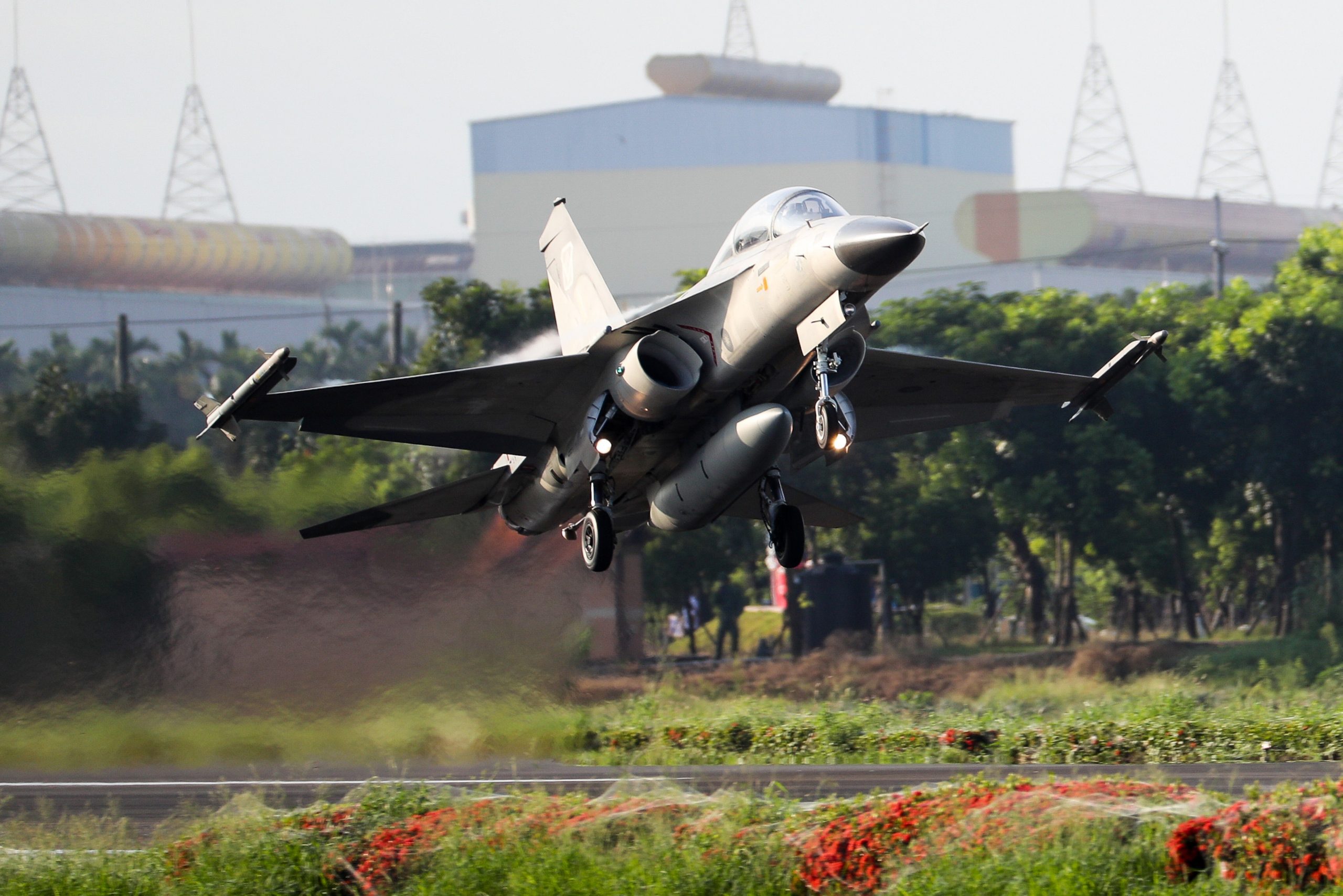Ever since 19 Chinese jets breached Taiwan’s air defense zones on September 5, tensions between Taipei and Beijing have been running high.
In response to China’s provocations, Taiwan on September 13 initiated 5-day long military drills during which Taiwanese F-16 pilots tried a special maneuver that would help in case an airstrip isn’t available for landing.
India Fast-Tracks Its Stealth Fighter Program; Incorporates Key Russian Tech Missing In Western Jets
The Chinese Threat
Ever since Xi Xinping came to power, China has taken an aggressive stand on Taiwan. It has employed several coercive tactics to build pressure on the island territory.
These measures have been further intensified since Taiwan’s current President, Tsai Ing-wen got elected in 2016. China’s strategy is to wear down Taiwan and prompt its citizens to conclude that their best option is unification with the mainland.
Beijing has increased the frequency and scale of patrols of PLA bombers, fighter jets, and surveillance aircraft over and around Taiwan. To show its force, it has also often sailed warships and aircraft carriers through the Taiwan Strait.

The biggest of these instances in recent times was the PLA sending 19 aircraft into Taiwan’s “air defense identification zone” (ADIZ) on September 5. These included 4 nuclear-capable H-6 bombers along with 10 J-16, 4 Su-30 fighters, and an anti-submarine aircraft.
The planes flew a short distance from the coast of China towards the southern tip of Taiwan, into the country’s ADIZ.
DECODED: Why Dassault (Rafale) Aviation Surrendered A Multi-Billion Dollar Deal To US Fighter Jets Even Before Evaluation
After Taiwan recently inked a $62 billion deal with Lockheed Martin to procure 66 new F-16 “Viper” jets by 2026, experts opined that if a reunification-by-force mission breaks out, China’s first step would be to destroy Taiwan’s airfields and command centers.
This would render the F-16Vs unable to take off, and prevent those in the air from landing. This Chinese threat to Taiwan’s vulnerable air bases is something the autonomous region must prepare for.
Preparing For Potential War
Taiwan launched its major 5-day war games, the 37th annual Han Kuang exercises, on September 13. The island’s defense forces conducted simulations to prepare Taiwan for a potential Chinese attack. Day One saw the forces practicing for biological and chemical attacks, along with combat preservation.
Troops in Tainan, a city located in southern Taiwan, trained in treatment and decontamination following a mock bioweapon attack. Soldiers were triaged and “victims” were sent to field hospitals. Members of the 39th Chemical Group hosed down impacted vehicles and equipment.
The island’s main battle tanks, fighter jets, and warships were relocated to assigned shelters in preparation for counterattack and redeployment.
F-16Vs and Mirage 2000s landed at Chiashan Air Base in the eastern county of Hualien after taking off from the west of the island. Chiashan is where the key defense installation facing the Western Pacific is located.
Chinese Navy Sails Its ‘Most Powerful Warship’ Near Alaska; Sets ‘Alarm Bells’ Ringing In The US
It reportedly has underground hangers, a lengthy taxiway, and space for close to 200 aircraft.
The Second Day
On September 14, Taiwan’s Defense Ministry said that its military police simulated sabotage attacks on crucial infrastructure.
The Guandu Area Command of the 6th Army Corps conducted defense drills in the northern part of the island, along the Tamsui River estuary. The assumption was that there would be an amphibious assault followed by an attempted decapitation attack against Taiwan’s leadership in downtown Taipei.
However, the most anticipated part of the drills, practice for a scenario in which missile strikes from China cripple Taiwanese airbases and key defense installations, was held on September 15.
The Highway Maneuver
Strategists predict that in case of an offensive being launched from China, the first wave of attack will involve a saturation missile strike to cripple key defense installations and critical infrastructures such as urban roads and highways. This would then be followed by an amphibious attack across the Taiwan Strait.
To prepare for this, a military aircraft emergency landing and take-off drill was held on a standard highway. The purpose was to test the ability of pilots and aircraft to land on the narrow road in case airstrips are damaged due to enemy assault.
The drill took place on a 2.26-kilometer section of Provincial Highway No. 1 near Jiadong and Fangliao in southern Pingtung County.

It featured a Ching-kuo indigenous fighter jet, a Mirage 2000-5, an F-16V, and an E-2K airborne early warning aircraft. The planes first landed on the highway in that order before taking off from the narrow highway. When all the aircraft had taken off, the drill came to a close.
Meet One Of World’s ‘Weakest Air Forces’ That Boasts Rafale, Typhoon, F-15EX Jets & Now Eying F-35 Stealth Fighters
It’s the first time such an exercise was conducted on a provincial highway- a standard roadway that has traffic lights and intersections and runs between cities. Other than the Jiadong one, Taiwan has 4 more such sections to assist in emergency military jet landings and takeoffs.
In the following days of the Han Kuang exercise, Taiwan’s armed forces will hold urban warfare, electronic warfare, and cyberattack exercises.
Since China’s military outspends that of Taiwan by at least 15 times, the island’s defense strategists have assumed a stance is focused on asymmetric warfare and missile defense.




